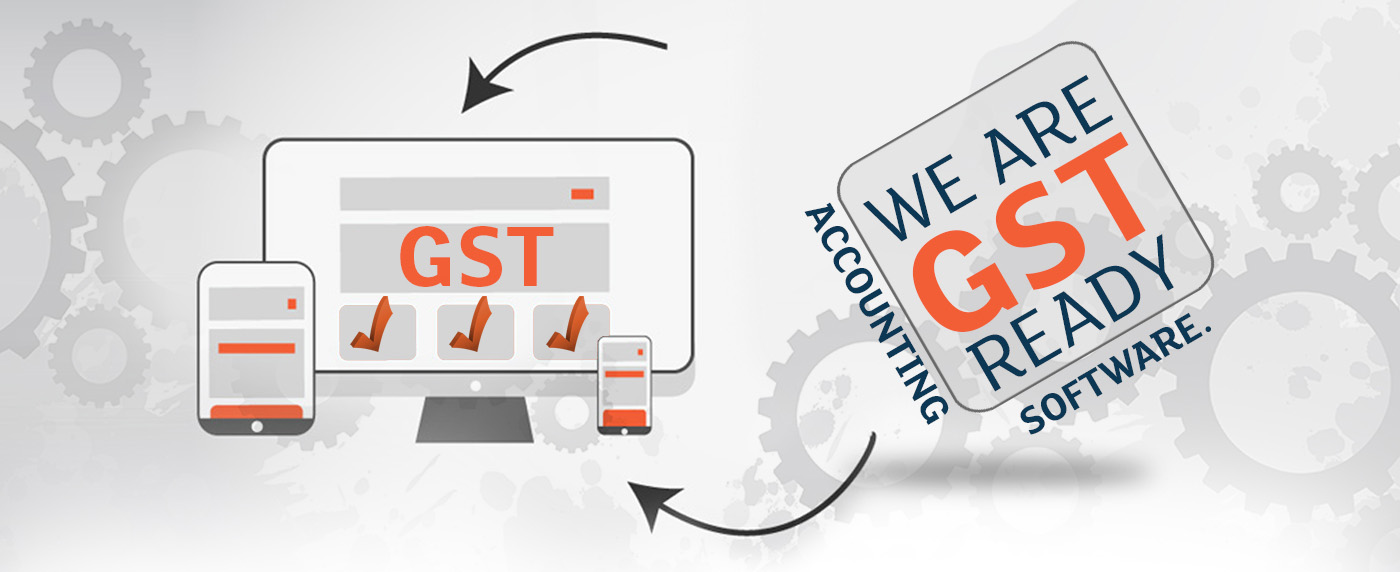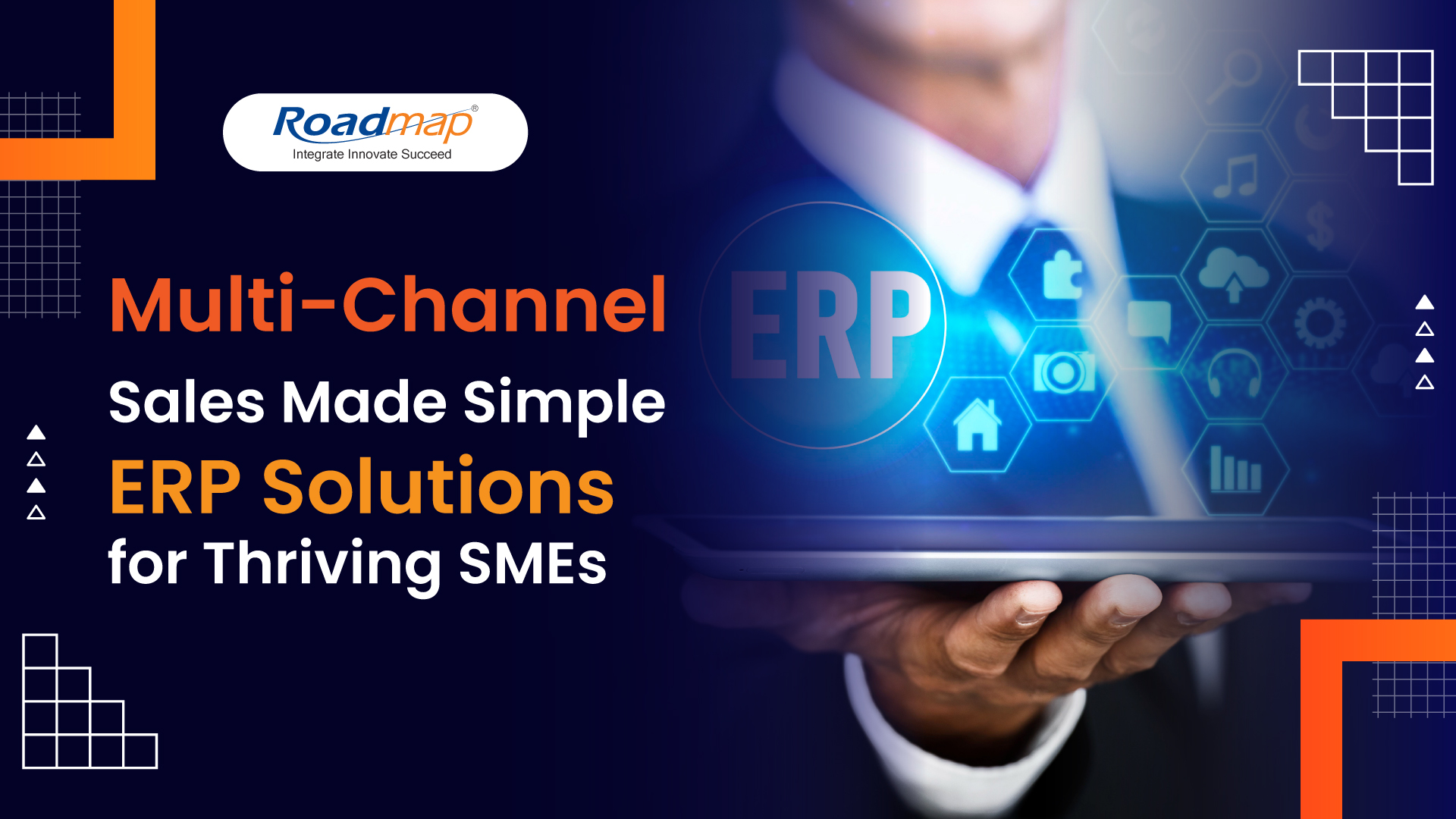
- Sarbudeen
- 05-Sep-2017 10:35:46
GST Revealed from an ERP Perspective
“Goods and Services Tax means any tax on supply of goods or services or both except
taxes on the supply of the alcoholic liquor for human consumption”, says
Article 366 (12A); amended by the 122nd Constitutional
Amendment Bill, 2014; passed in the parliament with all amendments on 29 March
2017; finalized with all updates during the 17th meeting of the GST Council on
18 June 2017; and rolled out on 01 July 2017.
Introduction
GST replaces all indirect taxes levied on goods and services
by the central and state Governments. Its implementation will have a
far-reaching impact on almost all the aspects of business operations in India.
With more than 140 countries adopting some form of GST, India joins the cluster
after being an exception for quite some time. GST is a destination-based
value-added tax levied at all points in the supply chain, with credit allowed
for any tax paid on input acquired for use in making the supply. It would apply
to both goods and services in a comprehensive manner, with exemptions
restricted to a minimum.
The sudden shift from the existing
taxation procedures to GST, though may simplify the remittance procedure, is
bound to destabilize the Accounting and Financial management aspects of a
majority of businesses in the manufacturing as well as service sectors. Roadmap’s GST ready ERP solution is
designed to aptly adapt and fit in between any accounting platform and the GST
regime’s scenario.
Who is liable for GST
registration?
People and businesses covered by the factors listed below
are liable for GST registration:
- Every
person if supplying goods or services more than INR 25 lakhs (Rs.10 lakhs
for north east states including Sikkim).
- If
you are purchasing or selling goods outside the state irrespective of the
limit mentioned in point 1.
- If
you are receiving or providing services outside the state irrespective of
the limit mentioned in point 1.
- If
you are required to pay tax under reverse charge.
- If
you are non-resident taxable person irrespective of the limit mentioned in
point 1.
- Input
Service Distributor.
- An
aggregator who supplier services under his brand name or his trade name
irrespective of the limit mentioned in point 1.
- Every
electronic Commerce operator like Flipkart, Amazon, etc., irrespective of
the limit mentioned in point 1.
- A
person who supplies goods and services through electronic commerce. In
other words, if you want to sell on Flipkart, Amazon, then you will need
to register yourself first irrespective of the limit mentioned in point 1.
- Any
person who is required to deduct TDS under GST (not under Income Tax Act,
1961).
Registered, Composition,
and Unregistered
Companies with more than INR 75 lakhs turnover are
categorized as Registered.
Companies with not more than INR 75 lakhs turnover will come
under the Composition scheme. Under this scheme, Manufacturers are liable to
pay 2% GST; suppliers of food or any other article or drink for human
consumption (except alcoholic liquor for human consumption) are liable to pay
5% GST; and suppliers other than the aforementioned are liable to pay 1% GST.
Companies with less than INR 20 lakhs turnover will not be
liable for paying GST, and come under the Unregistered category. In the
instance of an unregistered dealer selling to a registered dealer the registered dealer is required to pay GST on Reverse Charge
basis for such supply. Reverse Charge means the liability of the person receiving goods and/or services
to pay GST instead of the person supplying the goods and/or services in respect
of specified categories of supplies.
Every registered person availing services from an
unregistered dealer or purchasing goods from an unregistered dealer has to pay
the GST under the respective HSN Code of the Service / Goods by raising an
Invoice. It means all the registered persons, liable for GST for unregistered
services/ goods are to raise Invoice on self and file returns to take Input
Tax Credit (ITC). ITC means at the time
of paying tax on output, the supplier can reduce the tax already paid on
inputs.
Registered dealers selling to Unregistered dealers will have
to mention that they follow Reverse Mechanism and relieve the Unregistered
company from GST. The registered dealers, who are liable to pay GST under
reverse charge mechanism, are supposed to know the rate of GST and HSN code for
each and every category of service or goods procured by them in this order.
The HSN / SAC factor of GST
In GST regime each invoice will have to mention HSN code for
each item sold or SAC for each service provided.HSN stands for
Harmonized System of Nomenclature, which codifies and categorizes trading goods
of similar nature into fitting sections. This is accomplished by assigning
unique HSN code to each class of commodity according to its nature and usage.
In case of services, each type of service is provided a
unified code for recognition, measurement and taxation; known as SAC (Services
Accounting Code for GST in India). SACs issued by the Government for current
Service tax shall remain the same for the GST regime as well.
Based on their turnover the previous year a majority of
traders will need to adopt two, four, or eight digits HSN codes for their
commodities. Businesses with less than INR 1.5 crores turnover does not have to
use HSN codes for its commodities. Businesses with turnover between INR 1.5 and
5 crores will have to use two-digit HSN codes for its commodities. Businesses
with a turnover of INR 5 crores or above will have to use four-digit HSN codes
for their commodities.
In the case of imports/exports, HSN codes of eight digits
shall be compulsory, as GST has to be compatible with global standards. HSN
codes in the GST website can be downloaded, checked, and used for
businesses. These HSN codes will have to be mentioned in Invoices while filing
GST tax returns on the GST portal. Further, at the time of
registration/migration, a taxable business will be required to mention the HSN
code of the goods dealt by it.
Striking Aspects of GST
GST is a welcome breakthrough in India’s taxation procedure,
which presently stipulates levy of tax at multiple points in Central and State
levels. But GST is a single point tax, which subsumes the following current
Central and State Government taxes:
|
Central Government
Taxes |
State Government Taxes |
|
1. Central Excise duty |
1. State VAT |
|
2. Duties of Excise (Medicinal and Toilet Preparations) |
2. Central Sales Tax |
|
3. Additional Duties of Excise (Goods of Special
Importance) |
3. Luxury Tax |
|
4. Additional Duties of Excise (Textiles and Textile
Products) |
4. Entry Tax (all forms) |
|
5. Additional Duties of Customs (commonly known as CVD) |
5. Entertainment and Amusement Tax (except when levied by
the local bodies) |
|
6. Special Additional Duty of Customs (SAD) |
6. Taxes on advertisements |
|
7. Service Tax |
7. Purchase Tax |
|
8. Central Surcharges and Cesses as far as they relate to
supply of goods and services |
8. Taxes on lotteries, betting and gambling |
|
|
9.
State Surcharges and Cesses as far as they relate to supply of goods and
services |
However Basic Custom Duty (BCD) on Imports, Electricity Duty on
Electricity, and Stamp Duty on Real Estate will continue to exist. In all the
details mentioned above it is to be noted that:
- The
Petroleum sector has been kept out of the ambit of GST;
- Liquor
for human consumption is exempt;
- Tobacco
and tobacco products will fall under GST; and
- The
Centre shall levy a 1% ‘Additional Tax’ on top of the GST for inter-state
movement of goods and services; and assign the same to the state from
where the supply originates.
GST Rate Slabs
To achieve RNR (Revenue Neutral Rate), which allows the
Central and State Governments to procure their current volume of revenue from
tax collections, GST rates are broadly classified as:
- Merit
Rate for essential goods;
- Standard
Rate for goods and services in general;
- Special
Rate for precious metals; and
- High
/ Demerit Rate
In order to control inflation, the Central Board of Excise and Control (CBEC) has exempted salt, milk,
gur (jaggery), egg, curd, unpacked food grain, paneer, fresh vegetables,
unbranded atta, maida, besan, and honey, besides education and health services
from the GST.
Gold, silver, and diamonds are placed in a new rate category
of 3% while rough diamonds would attract a nominal rate of 0.25%.
Otherwise, the GST Council has finalized a four-tier GST tax
structure of 5%, 12%, 18% and 28% on over 1,200 goods and 500 services.
A GST rate of 5% would apply for common use items and
agricultural implements. Two standard rates of 12% and 18%, would apply for the
bulk of the goods and services, including fast-moving consumer goods. The 28%
tax slab will be applicable to items that are currently taxed at 30-31% (excise
duty plus VAT).
The existing four categories of footwear on which different
rates of tax are applied have been simplified into two categories, those
costing below INR 500 and those costing above this amount. They will be taxed
at 5% and 18%, respectively.
In textiles, silk and jute yarn are placed in the exempt
category, while cotton and other natural fiber will be taxed at 5%. Man made
yarn will attract a rate of 18% while natural yarn will be taxed at 5%. All
fabric will be taxed at 5%. Apparels and made-ups priced below INR 1000 will be
taxed at 5% and those above INR 1000 will be taxed at 12%.
Beedi leaves, currently taxed at anywhere between 5% and
28%, depending on the State, will be taxed at 18%. Beedis will be taxed at 28%,
with no additional cess being levied. Ultra luxury, demerit and sin goods (like
tobacco and aerated drinks), will attract a cess for a period of five years on
top of the 28% GST.
The GST subsumes the Swachh Bharat Cess,
the Krishi Kalyan Cess and the Education Cess; and only the Clean
Environment Cess is retained. The revenues from the collection of cesses for
ultra luxury, demerit and sin goods; and clean energy would be used for
compensating states for any loss of revenue during the first five years of
implementation of GST. It is also observed that the cess would be lapsable
after five years.
As per the draft transition law, once GST is implemented, a
company can claim credit of up to 40 percent of their Central GST dues for
excise duty paid on stock held by it, prior to the rollout.
The elements of GST
The federal nature of Indian
democracy stipulates the Centre and the States to have distinct responsibilities to be
performed in accordance to the prescriptions of the Constitution. To accomplish
such responsibilities the Centre and State governments need to raise resources.
Therefore we have a dual GST system, wherein the tax collected is appropriately
shared between the Centre and the State.
The dual GST on the outset is comprised
of Central GST (CGST), and State GST (SGST) or Union Territory GST (UTGST).
CGST is levied and administered by the central government for supply of goods
and/or services within a state, i.e. intra state; while SGST is levied and
administered by the State on the same. But
SGST cannot be levied in Union territories without a Legislature. So instead of
SGST in the UTs of Chandigarh, Lakshadweep, Daman & Diu, Dadra &
Nagar Haveli, and Andaman & Nicobar Islands; UTGST, which is on par with
SGST in all aspects, is levied.
Then there is Integrated GST (IGST), where CGST and SGST /
UTGST are levied in the form of IGST by the Central government on every
inter-state supply of goods and/or services. The Destination based Principle of
GST will entitle the State or UT of ‘Destination’ to tax the goods and/or
services supplied.
The operational sequence of appropriating taxes
through IGST levied on an inter-sate sale is as follows:
- The
inter-State seller will pay IGST on value addition after adjusting
available credit of IGST, CGST, and SGST on his purchases;
- The
Exporting State will transfer to the Centre the credit of SGST used in
payment of IGST;
- The
Importing dealer will claim credit
of IGST while discharging his output tax liability in
his own State;
- The
Centre will transfer to the importing State the credit of IGST used in
payment of SGST.
Note: In the earlier tax regime inter-state transfer of Goods
between branches of the same company was non-taxable upon filing of ‘Form - F’.
But as per GST assessment such transfers will be treated as inter-state supply
of goods and hence will attract IGST.
Export
and Import implications
As per the FDP (First Discussion Paper), exports from India
will be exempted from GST. According to a
Customs circular on export procedure in the GST regime, “Supplies of
goods and services for exports have been categorized as ‘Zero Rated Supply’
implying that goods could be exported under bond or Letter of Undertaking
without payment of integrated tax (IGST) followed by claim of refund of
unutilized input tax credit or on payment of integrated tax with provision for
refund of the tax paid,”.
SEZs (Special Economic Zones) also receive such benefits;
except the processing zone of SEZs, and sale from the SEZs to the DTA (Domestic
Tariff Area).
GST subsumes Countervailing Duty (CVD) and Special
Additional Duty (SAD), however, Basic Customs Duty will continue to do its
round in the import bills. BCD has been kept outside the purview of GST and
will be charged as per the current law only. Thus, import of goods and/or
services into India is considered Inter-State supply and accordingly attributed
Integrated Goods and Services Tax (IGST) along with Basic Customs Duty (BCD)
and other surcharges.
Some of the benefits of
GST
- GST
replaces 17 indirect taxes, thereby reducing compliance cost.
- Tax evasion is set to drop; and Input tax credit will
encourage suppliers to pay taxes; thus, boosting revenue.
- A
Common Market would emerge, eradicating the currently fragmented Market,
which pushes costs up by 20 to 30%.
- Abolition
of octroi checks at state borders will bring down logistics and Inventory
costs by quickening the movement of Transportation facilities.
- As
there is no Cascading of Taxes, double taxation, and inter-state tax;
manufacturing will get more competitive, accomplishing the mission of Make
in India, and also rendering manufactured goods cheaper.
- GDP
will rise by 0.9 to 1.7% predicts NCAER, while HSBC estimates an 80 basis
point rise in GDP growth.
- GST will rule out state restrictions and levies
that complicate ecommerce.
Roadmap’s
GST-ready Solution
The sudden shift from the existing
taxation procedures to GST, though may simplify the remittance procedure, is
bound to destabilize the Accounting and Financial management aspects of a
majority of businesses in the manufacturing as well as service sectors.
Roadmap’s GST ready ERP solution is
designed to aptly adapt and fit in between any accounting platform and the GST
regime’s scenario, in order to easily digitize and streamline any company’s
record maintenance; Accounting, Finance, and Taxation procedures;
standardization of invoice capturing process, for both sales and purchases; and
statutory compliance requisites. The integration of Roadmap’s taxation module
with all the other modules dealing with business units, which contribute to GST
components, gives clear visibility of the tax structure and grants absolute
control in assessing the tax value. Further, our ERP’s high scalability is
capable of incorporating any changes that might
be attributed to the GST structure and/or slab in the future.
Roadmap’s taxation solution is devised
to incorporate the GST regime’s HSN (Harmonized System of Nomenclature) code
and SAC (Services Accounting Code); and satisfy the statutory requisites of
Invoicing for all industry types. The incorporation of single HSN code representing
multiple tax rates at the Master and Transaction levels automates the
application of appropriate tax percentages for corresponding modes of
transaction. The capacity to handle the generation of different HSN codes for
the same item, when sold to different customers is a blaring highlight of the
module.
Hence, Roadmap ERP is the highly
recommended, scalable, and adaptable solution to simplify and streamline the
transition procedure, and flawlessly automate the calculation and appropriation
of all the components of GST for all industry types.




